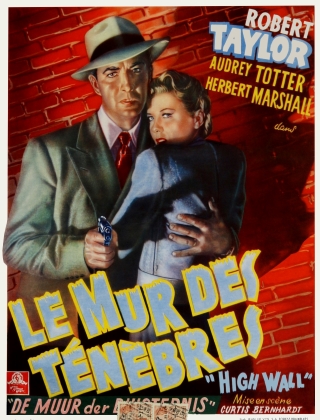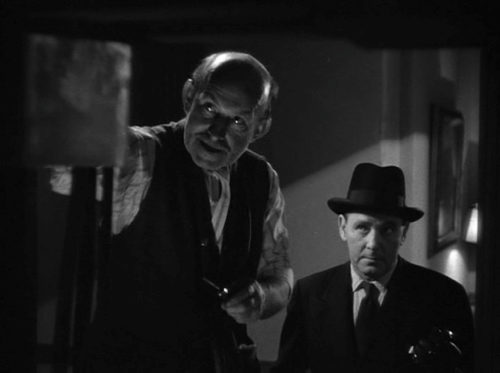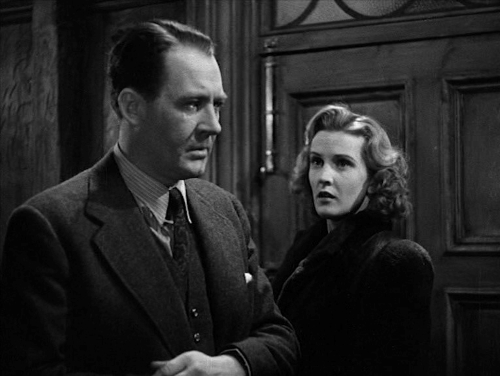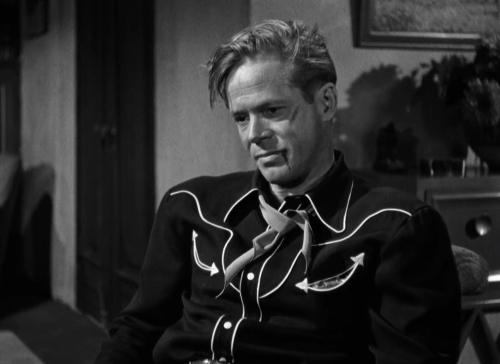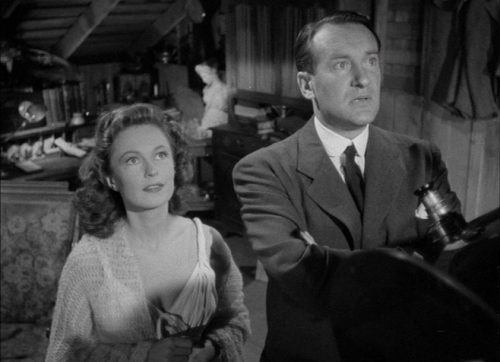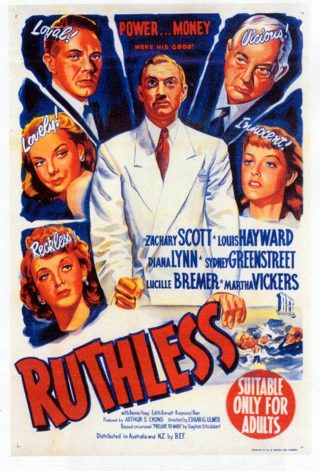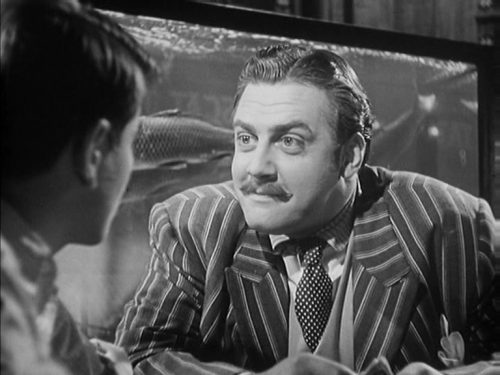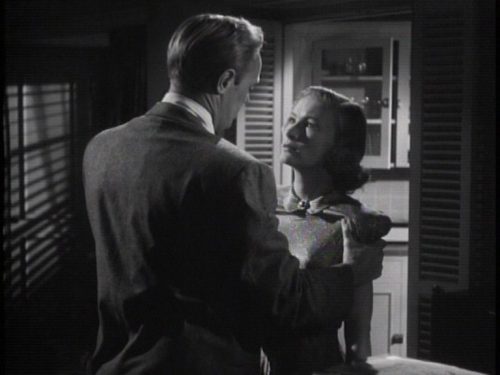Many a film noir has traded heavily on mistrust, betrayal, isolation. These are themes that breed doubt and underpin anxiety, and what better way to highlight doubts and anxieties than to tell a tale through the eyes of an amnesiac. Even partial loss of memory becomes a type of betrayal of self, a descent into the classic inky nightmare of the noir universe where a person can no longer feel confident in their own being, where awareness is forever tempered by a gnawing fear that there may be something contemptible lurking within one’s own heart. This notion of the unreliable narrator has enjoyed sporadic popularity and saw something of a revival in crime fiction and its adaptations a few years ago. High Wall (1947) toys with this concept, but it doesn’t really pursue it. Depending on the viewer’s own tastes, that may or may not be regarded as a strength.
We open on a club scene, one of jazzy music, well-heeled revelers clustered round tables or taking a turn on one of those characteristically small dance floors. The camera glides along, drinking it all in and then pauses on a figure at the end of the bar, perched there with his own drink in front of him. His entire demeanor screams disquiet, the cultured, patrician features rumpled and strained by some inner turmoil. He is Willard Whitcombe (Herbert Marshall), a publisher of virtuous literature. After establishing his identity, we cut to the interior of a speeding car, the driver’s countenance set and grim, hurtling down the highway while the lifeless body on the seat beside him lolls obscenely. And then he ploughs off the road, seeking to join the departed passenger who’s been keeping him company. This is Steven Kenet (Robert Taylor), one of those damaged veterans, a man not really recovered from a head injury suffered during the war. That corpse he had been taking on a ride across his own version of the Styx belonged to his wife, and his addled brain has convinced him he must have strangled her before blacking out.
Well, that’s not how things work out, and Kenet finds himself rescued and sent to a psychiatric hospital for assessment. This is the point where the plot kicks in properly, where the patient’s despair gradually transforms into doubt, partly due to the almost complete disintegration of his family and partly as a result of the efforts of Dr Lorrison (Audrey Totter). As we follow Kenet’s painfully slow quest for enlightenment regarding those lost hours, there is another strand unspooling in parallel. While our protagonist might be assailed by fear and uncertainty, there hasn’t been a great deal of doubt in the minds of the viewers as to who the guilty party really is. I don’t think it would amount to a significant spoiler to reveal the identity here – allusions aside, the truth is explicitly spelt out on screen before long anyway – but I’ll refrain from doing so. Of course people can feel free to do so in the comments below if they wish.
Seeing as the script by Sydney Boehm and Lester Cole does reveal the culprit quite early, it is probably fair to assume that the intention was to make this less of a mystery or whodunit and more of a suspense picture. The viewer is not invited to follow a detective figure as he ferrets out leads to corner the killer. We already know who this is, and we also know that the hero is just that and not some cleverly disguised bogeyman waiting to spring a surprise. Somewhat similar to the inverted mystery, the suspense derives from our being a hop, skip and a jump ahead of everyone on the screen, knowing more than they do yet unsure of how or when they will acquire that knowledge. As a premise, this certainly has its merits, but my feeling is that it tends to draw some of the sting out of the amnesia plot, perhaps diluting the potency of the noir scenario in the process.
Curtis Bernhardt had a flair for both film noir and melodrama, and that strong run he embarked on from the mid-1940s, starting with Conflict and extending through to Payment on Demand, saw some of the sensibilities and trappings of both styles bleed into each other. While I have a few reservations about some of the scripting decisions, that is not to say the film is weak overall. Bernhardt’s atmospheric direction is a big part of what makes it work, elevating even the most mundane situations through sheer visual bravado. He manages to elicit tension and the hint of needle from something as simple and prosaic as two people squeezed into a phone booth in a diner, and then juxtaposes hope and despair by having the hero escape a full on deluge by taking a shortcut through a virtually deserted church on his way towards ultimate salvation. Brief, throwaway moments that employ the visual language of the cinema with wonderful eloquence.
There are a good many high points in the post-war career of Robert Taylor, and the quality of his work was remarkably consistent up till at least the start of the 1960s. Pretty much all of his films noir are enjoyable and High Wall is one of the better ones – personally, I’d place Rogue Cop and Party Girl ahead of it but that still leaves it occupying a very respectable third place. He gets the hunted intensity of the amnesiac, the primal guilt that the condition provokes, across very successfully. When this movie was made it seemed as though Audrey Totter was destined to be cast in nothing but film noir, which can be taken as a testament to how comfortably she slotted into that murky style. As a rule, I think I prefer her in unsympathetic roles where her pouty petulance can be so effective. However, she is very much the Girl Friday figure in High Wall, somewhat severe and sober, but loyal and resourceful too. Regardless of the part he was playing, be it hero, villain or anything in between, Herbert Marshall brought what I can only describe as an air of reassurance to the screen. His presence alone could typically be taken as proof that the movie would be a good one.
High Wall has been available on DVD for years as part of the Warner Archive, looking quite strong but sadly devoid of any supplementary material. It is a good, solid noir that falls just short of the very top flight, probably due to the nature of the script. However, it fits neatly into that tantalizing sub-genre of Freudian-influenced dramas and thrillers that flourished in the mid to late 1940s. While it has a few flaws, the direction of Curtis Bernhardt and the strong central performances of Robert Taylor, Audrey Totter and Herbert Marshall easily compensate. Highly recommended.
